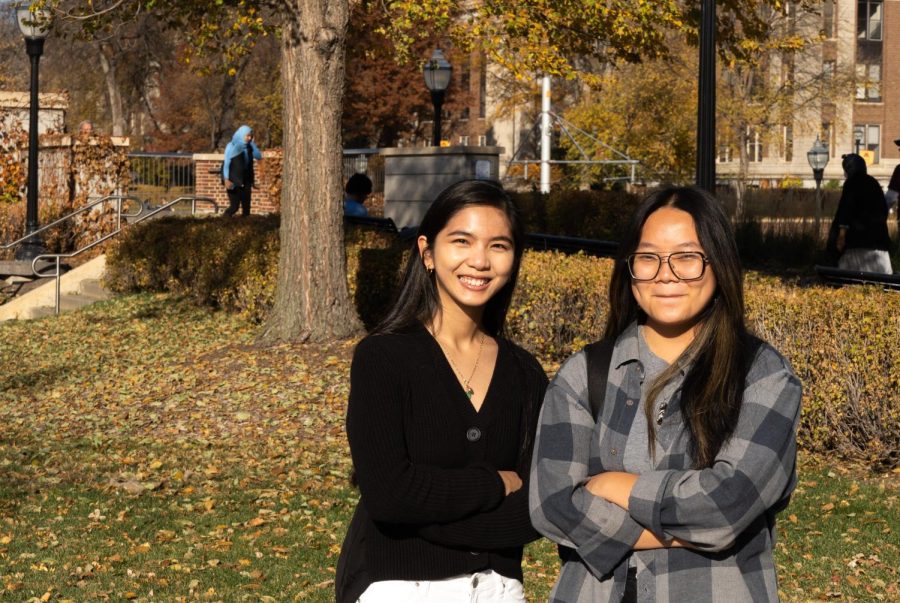Students are working to establish an Asian American Studies (AAS) department and major at the University of Minnesota, saying too few opportunities exist to learn the importance of Asian American history and culture.
First-year students Veronica Tan and Laichia Vang conducted a research survey for their sociology class centered around Asian American identities.
The survey asked participants about their history with taking AAS classes, being involved in activism and their overall opinion on having an Asian American studies major at the University.
The University currently offers AAS as a minor, with required courses in politics, history and Asian American culture. Vang said having an AAS major would allow Asian Americans to feel more seen on campus.
“Coming from a student who has always attended predominantly white institutions, never quite seeing yourself is detrimental to your health and internalization of who you are,” Vang said.
According to the University’s Institutional Data and Research database, 12.7% of students enrolled during the fall 2021 semester on the Twin Cities campus are Asian, which is nearly 7,000 students.
Despite offering classes on AAS, the University has never had an established department. Asian American studies courses are currently offered through other departments, such as sociology and gender, and women and sexuality studies.
According to the College Board, 26 universities nationwide, including one Big 10 school, offer an Asian American studies major. The AAS minor director and psychology professor Richard Lee said the University’s AAS minor was added as part of a failed initiative to push for a general Asian studies department in the early 2000s.
“When we were starting out, it was really important for us to first just come together as faculty and develop an undergraduate curriculum and see how receptive it would be to the student population,” Lee said.
Lee said the University has held discussions on moving the initiative to department status, but no action has been taken recently.
Tan and Vang spoke with Lee about creating an AAS department and major, but Lee said acquiring enough staff dedicated to teaching Asian American studies courses would pose a challenge.
Acquiring departmental and major status also requires additional University funding. Every department at the University is granted a budget for courses, hiring faculty and other programming needs, Lee said.
According to an email statement from the College of Liberal Arts, programs must submit a proposal to the college’s legislative body to request a new major. Members would then discuss and evaluate the proposal.
“These conversations can also consider additional innovative strategies that might best serve students and faculty well in a given subject area,” the statement said.
Survey results show student support for an AAS major
From their survey, Tan and Vang found that because most surveyed students had already declared another major, they did not express interest in majoring in Asian American studies. However, many said they welcomed making it available to prospective students.
“Many of them say that they would like to have these classes because in their past educational careers, Asian American studies is not focused on,” Tan said. “It is always about European history or American history.”
Some students who took the survey said they have not taken AAS courses at the University because they were not made aware of their existence.
“There are young folks who already have an idea of what they want to do, but they don’t know too much about the courses that are offered,” Vang said. “Certainly, there’s a lot of students who do want to take a course, but it is not offered in a semester.”
Tanvi Abraham, a third-year student studying political science and philosophy, said the lack of an AAS major reflects that the University doesn’t prioritize recognition of Asian American identities. She said she thinks this makes it difficult for Asian American students to learn about their own culture.
“I think they acknowledge that it exists, but beyond that, I think it is very difficult to find more about your own history,” Abraham said.
Abraham said she noticed her professors often focus on Western culture or history in their lessons, with some of her major-specific classes failing to cover important people in Asian history.
“You’re given enough information if you’re white and you don’t know anything about it,” Abraham said. “But if you are Asian American and want to learn more about your history, or you actually want to use it and have a degree in it, you’re out of luck.”
People who filled out the survey had the option to opt in to participating in a focus group led by Tan and Vang to discuss what they would like to see in a potential AAS major.
Abraham said she plans to participate in the focus group and hopes to contribute ideas about classes and her vision for the major.
Many support the creation of an AAS department and major, and there is hope to move the conversation forward, Lee said.
The need for Asian American representation has only increased following the COVID-19 pandemic when anti-Asian sentiment increased in the U.S. and internationally, Tan said. Anti-Asian hate crimes increased by nearly 150% in March 2020, and Tan said the AAS major would educate students on Asian American culture and remove stereotypes.
“It is important for me to recognize who I am, where I come from, but [to] also share that to the people around us,” Vang said.













